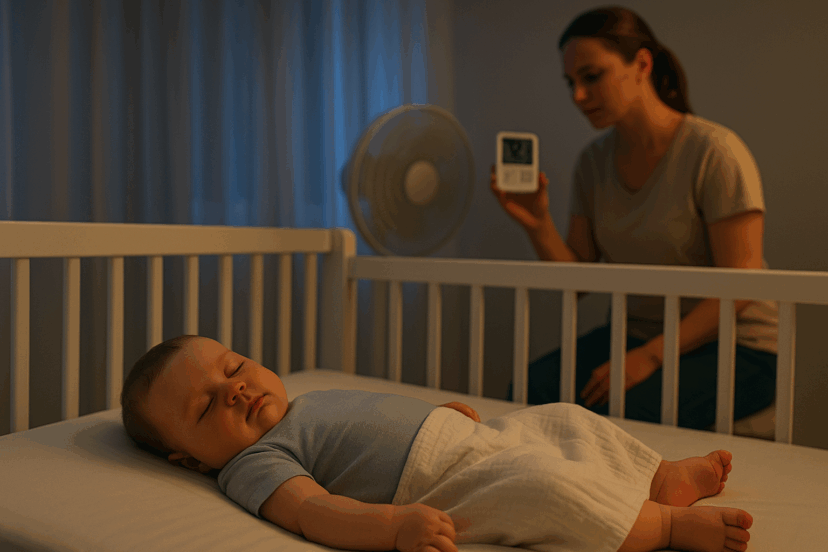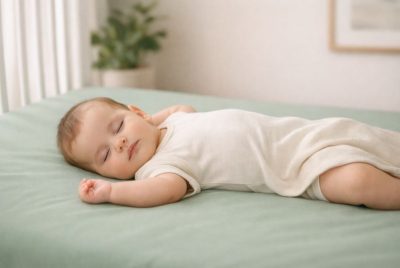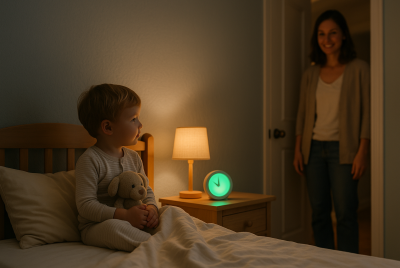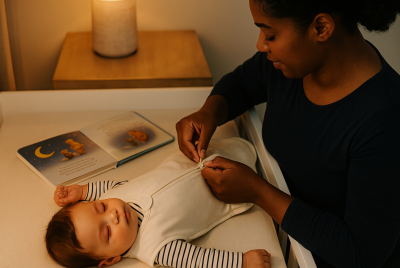Baby Sleep Safety 101: Summer Edition
We may earn a commission for purchases made using our links. Please see our disclosure to learn more.
When the temperatures rise, so do the risks for infants during sleep. Baby sleep safety becomes even more important in summer, when overheating can increase the risk of Sudden Infant Death Syndrome (SIDS), restless sleep, and general discomfort. In this guide, we’ll walk you through essential warm-weather tips to ensure your little one sleeps safely, comfortably, and cool all season long.
Whether you’re a first-time parent or a seasoned one facing a heatwave, these tips can make all the difference in protecting your baby’s health and your peace of mind.
Key Summer Risks That Affect Baby Sleep Safety
Overheating
Compared to adults, babies have less ability to control their body temperature. Even an environment that seems pleasant to you may be too hot for your infant. Overheating has been connected to an increased risk of SIDS and is a significant contributor to dangerous sleep settings. Steer clear of bulky blankets, bulky clothing, and inadequate ventilation.
Dehydration and Nighttime Discomfort
Even while babies don’t require water until they are six months old, dehydration can quickly develop due to fluid loss, and summer nights can cause excessive perspiration. Look for symptoms like as dry lips, fewer wet diapers, or unusual fussiness at night.
Changes in Routine and Sleep Patterns
Longer days and more family activities often shift bedtime routines. Traveling, outdoor events, and irregular naps can cause sleep disruptions. Maintaining a consistent and safe bedtime routine helps babies sleep more soundly and securely.
How To Keep Your Baby Cool and Safe While Sleeping
Set the Ideal Room Temperature
Aim for a nursery temperature between 68°F to 72°F (20°C to 22°C). Use a digital thermometer to monitor the room, especially if your AC is inconsistent. If air conditioning isn’t an option, use a fan in a safe position—not directly blowing on the baby—and keep windows open during cooler evening hours.
Choose the Right Sleepwear
Less is more. A lightweight cotton onesie or a summer sleep sack is usually enough. Avoid fleece or polyester, which can trap heat. If your baby’s neck feels sweaty or damp, they’re likely overdressed.
Use Breathable Bedding and Sleep Surfaces
Stick with a firm, flat mattress with a fitted sheet. Avoid pillows, blankets, bumpers, or stuffed animals. Opt for organic cotton sheets if possible—they’re gentle on sensitive skin and breathable.
Keep Cribs and Bassinets Clear and Ventilated
Place the crib away from direct sunlight, windows, or radiators. Ensure air can circulate freely around the crib. Mesh-sided bassinets or playards allow better airflow and are ideal for summer naps and travel. For added convenience, a bassinet with wheels makes it easy to move your baby to cooler areas of your home without disrupting their sleep.
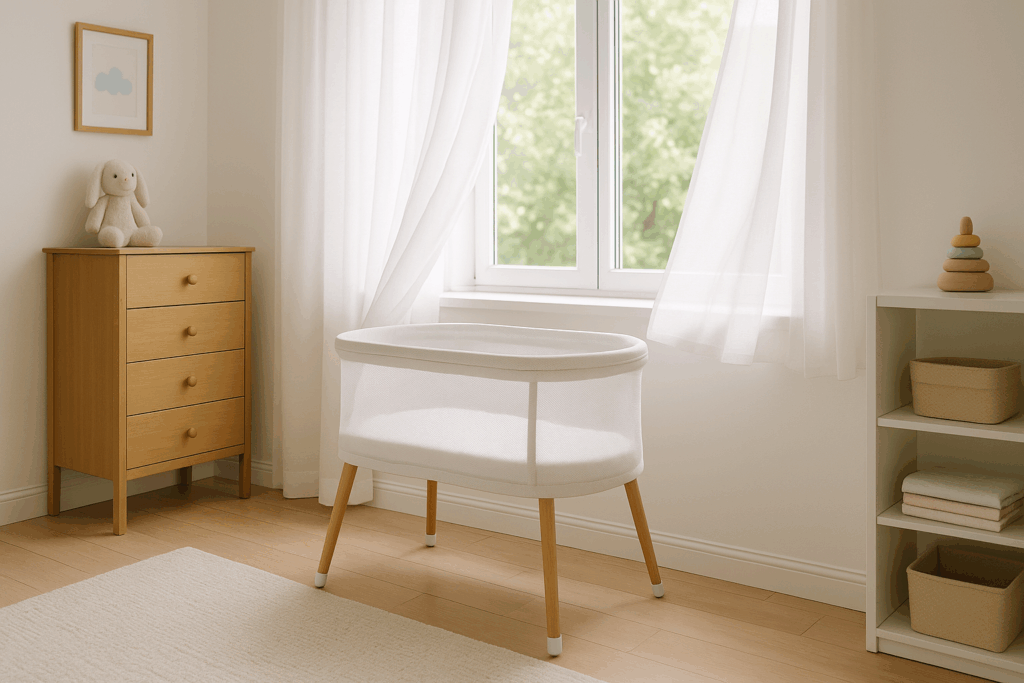
What the Science Says About Summer Sleep Safety
Scientific research continues to reinforce what many parents instinctively feel—keeping babies cool and comfortable while sleeping is not just about comfort; it’s about survival.
AAP’s 2022 Guidelines Highlight the Dangers of Overheating
The American Academy of Pediatrics’ 2022 Safe Sleep Guidelines confirm that overheating during sleep is a key risk factor for Sudden Infant Death Syndrome (SIDS). Their comprehensive review encourages parents to avoid overdressing and heavy bedding, instead advising lightweight sleepwear and a well-ventilated room. These guidelines also stress the importance of placing babies on their backs on a firm, flat sleep surface with no soft toys or loose blankets.
Thermal Stress and Its Link to SIDS
Supporting this, a clinical study on heat stress and SIDS risk explains how elevated temperatures can impair an infant’s ability to regulate body heat and trigger autonomic dysfunction during sleep. The research shows that excessive warmth can not only cause discomfort but may also disrupt the baby’s natural arousal mechanisms, a critical factor in SIDS prevention.
Summer Baby Sleep Safety Must-Haves
Here’s a curated list of Amazon-recommended products that support a safe and comfortable summer sleep environment for your baby:
1. Newton Baby Crib Mattress
A breathable, washable mattress that promotes airflow and reduces the risk of suffocation—perfect for hot weather.
2. HALO 100% Cotton Summer Sleep Sack
Lightweight and sleeveless, this wearable blanket helps prevent overheating while keeping your baby safely covered.
3. Vornadobaby Air Circulator Fan
Designed specifically for nurseries, this whisper-quiet fan provides gentle airflow without blowing directly on your baby.
4. ThermoPro TP49 Indoor Thermometer & Hygrometer
Accurately monitors room temperature and humidity so you can maintain the ideal environment for safe sleep.
5. Graco Pack ‘n Play Travel Dome LX
A versatile, breathable mesh bassinet and portable crib with a shaded canopy—great for travel or outdoor naps.
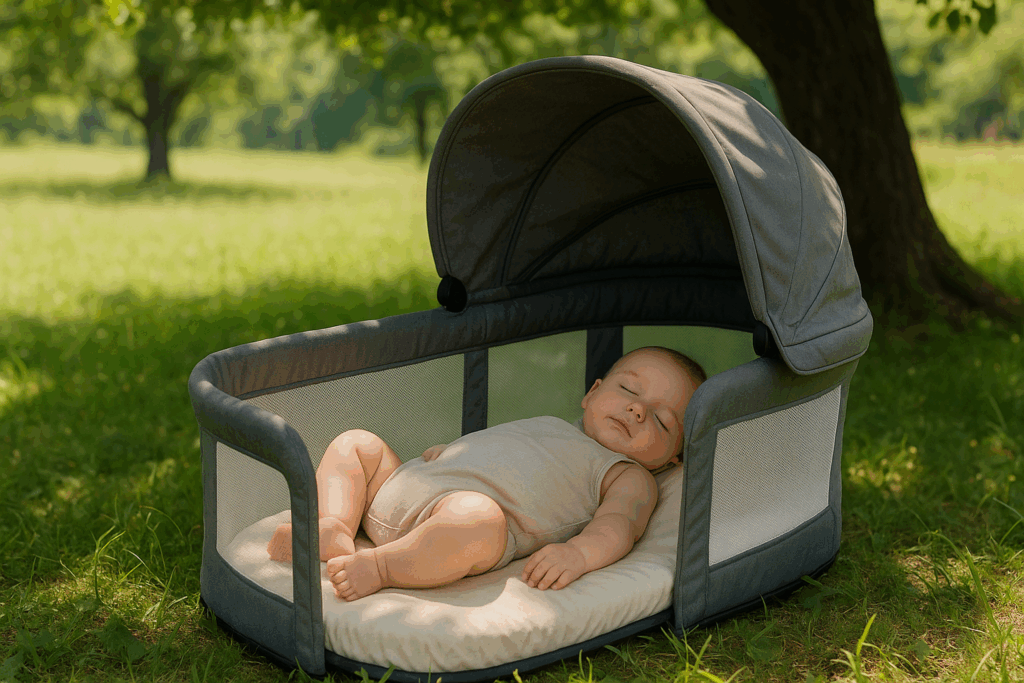
Common Mistakes to Avoid During Summer Sleep
- Using loose blankets or thick swaddles: Even if the AC is on, it’s safer to dress your baby lightly.
- Overdressing “just in case”: Trust the room temperature and feel your baby’s back or chest instead of guessing.
- Skipping a bedtime routine: Travel and vacations disrupt normalcy, but a quick bedtime ritual signals sleep time.
- Placing a fan too close: Direct air can cause chills; always angle it away from the crib.
Conclusion – Summer Peace of Mind Starts With Smart Sleep Safety
As the heat ramps up, so should your awareness of baby sleep safety practices. From breathable sleepwear to monitoring room temperature, each decision you make contributes to your baby’s comfort and protection. Stay proactive, stay informed, and give your little one the peaceful, cool sleep they need to grow healthy and strong—even on the hottest nights.
FAQs About Baby Sleep Safety in Summer
Q1: What should my baby wear to sleep in the summer?
A lightweight cotton bodysuit or a breathable sleep sack is perfect. Avoid socks, hats, or multiple layers.
Q2: Can I use a fan in my baby’s room?
Yes, but don’t point it directly at the crib. Keep it at a safe distance for gentle air circulation.
Q3: How can I tell if my baby is too hot while sleeping?
Check their chest or neck—not hands or feet. If it feels sweaty or hot, remove a layer.
Q4: Is it okay to use air conditioning at night?
Absolutely. A consistent, cool environment is ideal. Just avoid extreme chills or drafts.
Q5: Should I wake my baby to drink water during hot nights?
Not unless advised by a pediatrician. Babies under six months get hydration from breastmilk or formula.

